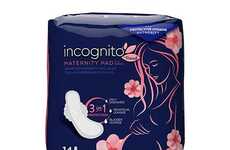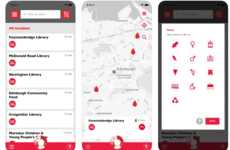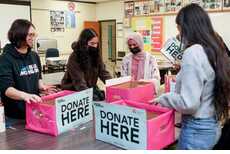
The Pivot Sanitary Pad Helps Human Trafficking Victims Get Help
Alexander Lam — July 10, 2013 — Art & Design
References: uwdesign2013 & idsa.org
In an effort to help human trafficking victims, a team from the University of Washington Division of Design developed the 'Pivot' sanitary pad. Pivot is a system for getting vital information to victims. Disguised as a normal sanitary pad, Pivot allows the user to discretely find information about what to do when they want help.
Within the sanitary pad is a water-soluble note with a detachable phone number. Printed on the note is a message and instructions for getting help. The instructions can then be destroyed by throwing it in water. A hotline number is printed on a fortune cookie wish so that the victim can effectively hide it.
The design team chose to place the message in sanitary pads because of their private nature and potential for easy distribution. Pivot will be distributed through locations such as health clinics and community organizations to high-risk women.
Within the sanitary pad is a water-soluble note with a detachable phone number. Printed on the note is a message and instructions for getting help. The instructions can then be destroyed by throwing it in water. A hotline number is printed on a fortune cookie wish so that the victim can effectively hide it.
The design team chose to place the message in sanitary pads because of their private nature and potential for easy distribution. Pivot will be distributed through locations such as health clinics and community organizations to high-risk women.
Trend Themes
1. Anti-trafficking Technology - Developing discreet technology to provide necessary information to victims of human trafficking.
2. Covert Communication - Designing products that allow for communication without raising suspicion.
3. Privacy-first Assistance - Creating solutions that prioritize the privacy and safety of those seeking help in dangerous situations.
Industry Implications
1. Sanitary Products - Opportunity to design products that do more than their basic function, catering to the needs of marginalized groups.
2. Community Organizations - Partnering with organizations to distribute innovative products that can help improve the safety of vulnerable groups.
3. Anti-trafficking Organizations - Working with non-profits and other organizations to develop innovative technologies to combat human trafficking.
4.2
Score
Popularity
Activity
Freshness























